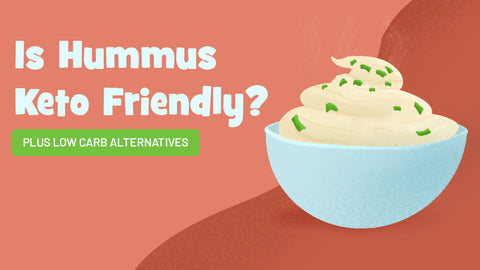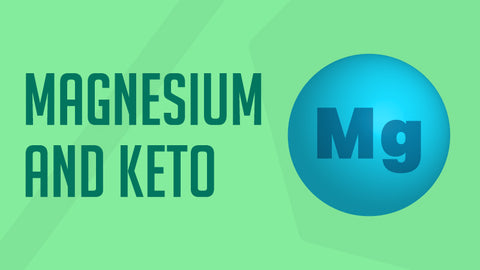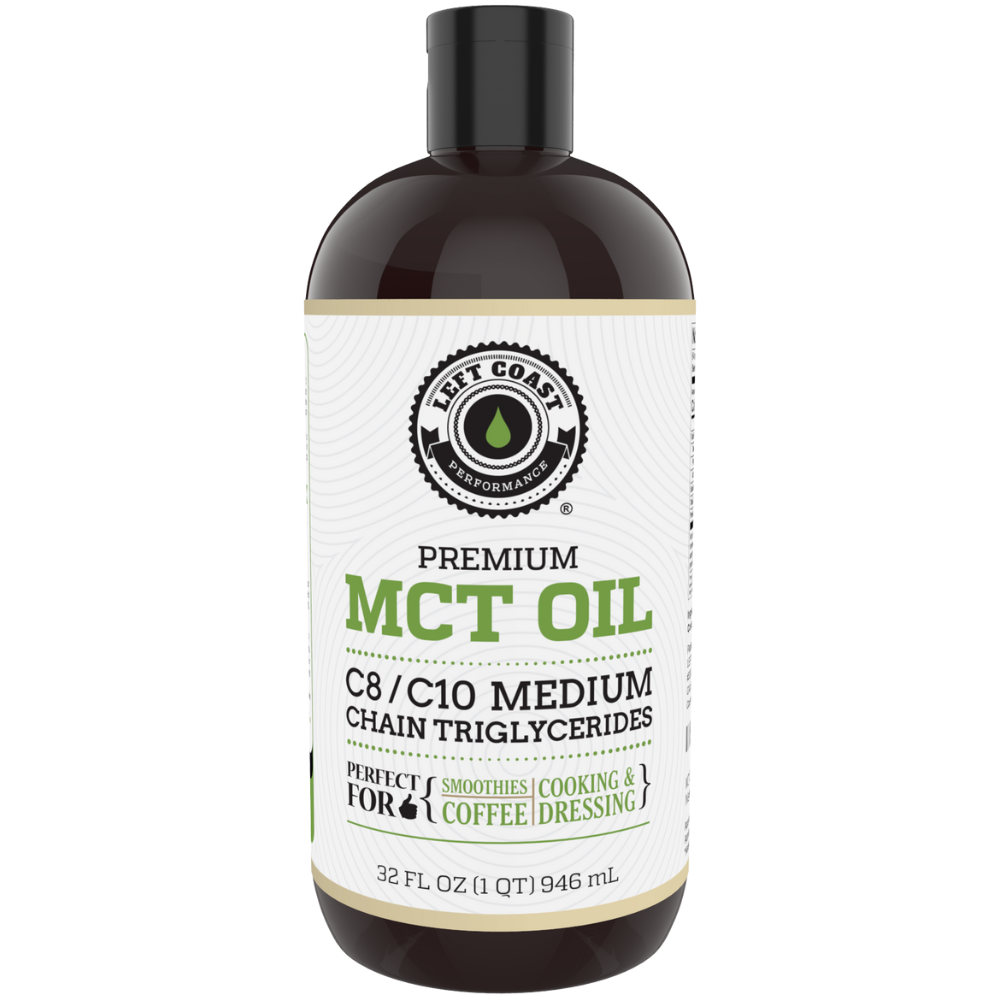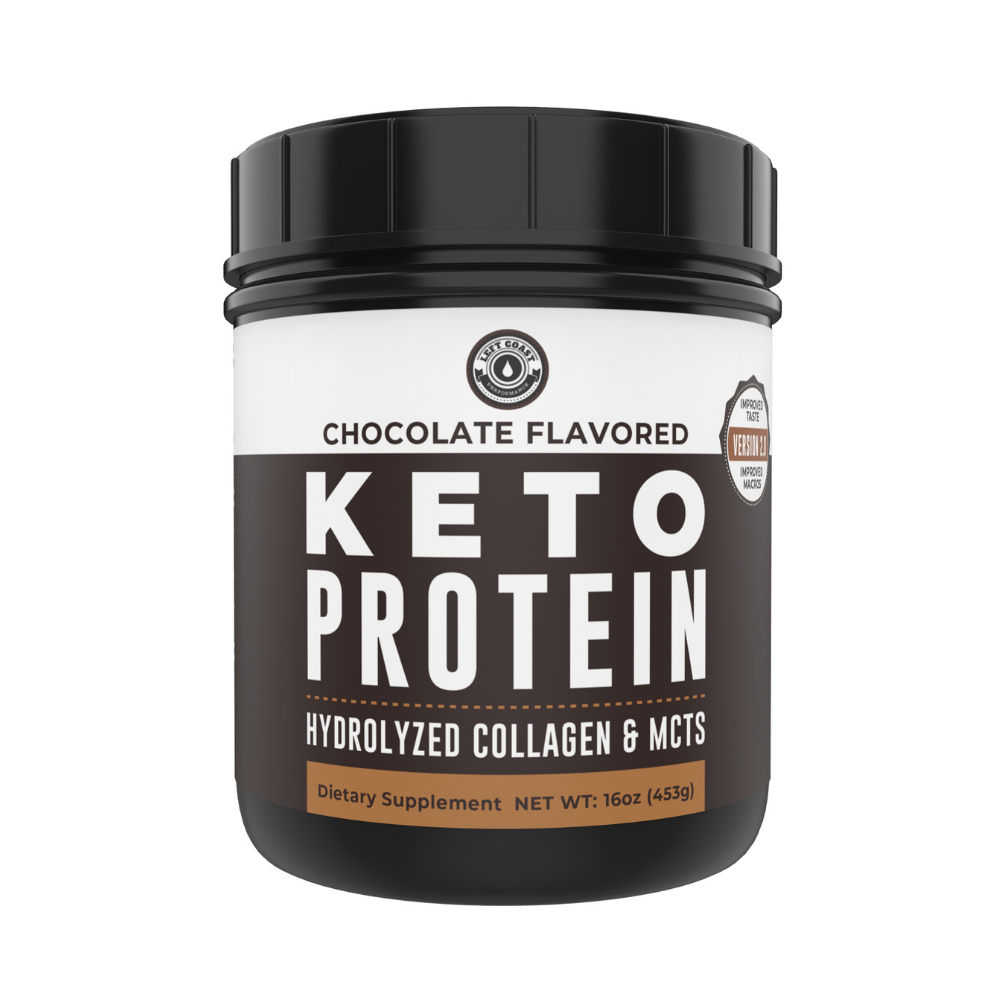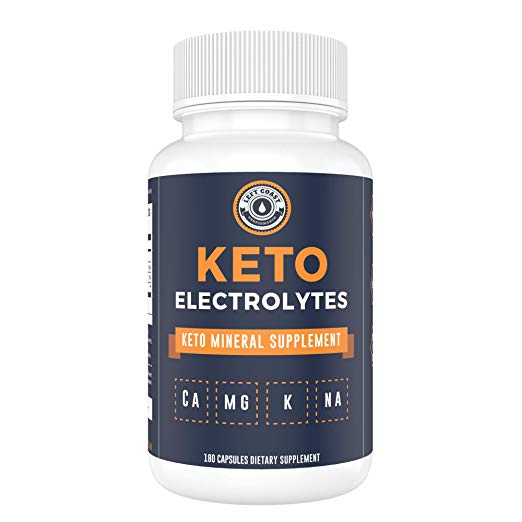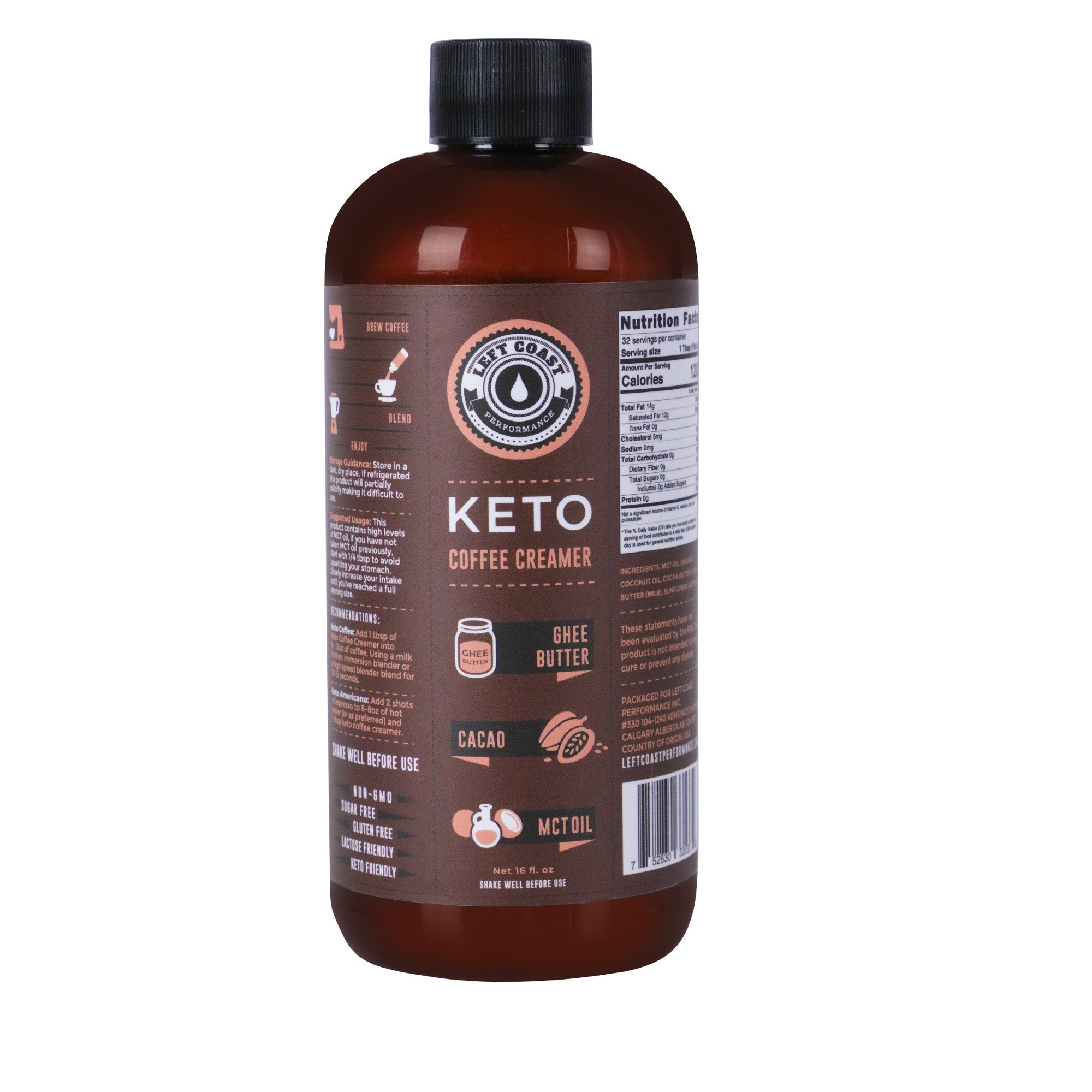MCT Oil Vs. Coconut Oil: What's the Difference and When to Use Each One
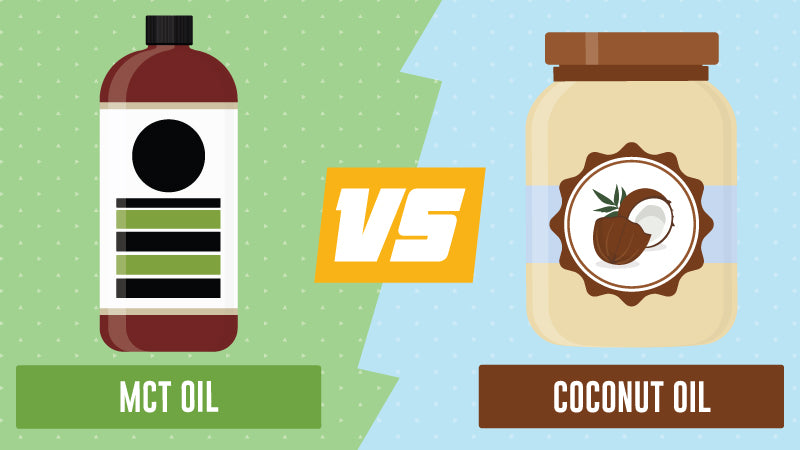
on June 18, 2019
MCT oil and coconut oil are often used interchangeably. Both are low-carb, high-fat ingredients that are often touted as superfoods.
However, there are several differences between the two. The main difference is the types of fats that the two contain; high quality mct oil contains only c8 and c10 which are medium chain triglycerides (mcts) where as coconut oil contains small amounts of mcts and large amounts of c12 and long chain triglycerides (lcts).
This helpful guide will walk you through which is better for losing body fat, improving mental clarity, delivering quick energy and when to coconut oil vs when to use mct oil.
MCT Oil or Coconut Oil: Which Should You Use and When?
A healthy diet can include both MCT and coconut oil. MCT oil, being a liquid, has a lower smoke point compared to coconut oil. This means it shouldn’t be heated to a high temperature. MCT oil is best used for drizzling over foods, in bulletproof coffee™️, used in salad dressings or taken as a dietary supplement. Coconut oil should be used as an oil for baking or high-temperature cooking and it is a terrific for DIY skin-care products.
If you are looking to get into ketosis quickly or just need a boost of energy as you transition into a ketogenic diet, MCTs can help. It can also be used for sustaining your energy if you practice intermittent fasting.
If your goal is weight loss, stick with MCT oil. It will be most effective for energy, without being stored as fat. It may also boost your metabolism and help you lose more abdominal fat. Coconut oil has other fats in it that will not boost metabolism quite as much. MCT is also slightly lower in calories.
Both MCT and coconut oil can be used as a moisturizer. Coconut oil may be slightly easier to apply, since it is not liquid. Coconut oil is an effective treatment for diaper rash as well.
What Is Coconut Oil?
Coconut oil is made by pressing the oil from a dried coconut. This results in a white oil with a mildly sweet coconut flavor that is solid at room temperature.
A tablespoon of coconut oil contains 120 calories and 13 grams of fat, fairly similar to most other fats. Coconut oil is solid because it is about 92% saturated fat. Saturated fats, like butter and lard, remain solid at room temperature, while unsaturated fats, like olive oil, are liquid at room temperature. Coconut oil is not a major source of carbohydrates, protein, vitamins, or minerals.
There are three main types of coconut oil you might come across. Not all of them are particularly healthy. These include:
- Partially hydrogenated coconut oil. The healthy fat in these oils are hydrogenated to become trans fats. These should be avoided completely as they are linked to inflammation and heart disease.
- Refined coconut oil. Processed, chemically bleached, and deodorized. Healthy fats are easily damaged by heat, so it is best to avoid this type.
- Extra virgin coconut oil. Unrefined and extracted from fresh coconuts without chemicals or high-heat processing. Has the most health benefits.
Coconut oil is very versatile in cooking and baking. It can be heated to high temperatures, making it more desirable for frying or baking than other oils. Many food manufacturers have used it to replace other trans fats because it is fairly shelf-stable and doesn’t have the same negative health consequences.
What Are Long-Chain Fatty Acids and Medium-Chain Fatty Acids?
Now for a bit of organic chemistry, I promise it won’t get too boring. All fats are a long chain of carbon molecules strung together and covered by hydrogens. The length of the chain and the bond between the carbon and hydrogen determine the type of fat it is.

Fats are organized by the number of carbons in a strand:
- Short-chain: Less than 6 carbons
- Medium-chain: 6-12 carbons
- Long-chain: 13+ carbons
Most of the fat in coconut oil, about 42-53%, is a medium-chain fat called lauric acid. Lauric acid has 12 carbons. The rest of fats in coconut oil are other types of medium and long-chain fats.
But, there is some controversy whether lauric acid should even be considered an MCT. It doesn’t quite act like the shorter MCTs in your body. We will get more into the details of the shorter MCTs in a bit, but those with 6, 8, or 10 carbons are easily used for energy and not as readily stored as fat.
Whereas, lauric acid acts more like a long-chain fat in the body. It cannot be as easily used as energy and is usually stored as fat. Every two additional carbons on a fat molecule can slow down the diffusion and utilization rate by 100 times. Many argue that lauric acid is lower quality than the other MCTs for this reason.
Liquid Coconut Oil / Fractionated Coconut Oil Vs. MCT Oil
Some manufacturers mislabel liquid coconut oil (sometimes called fractionated coconut oil) as MCT oil. But, this is not true MCT oil because it does not have a high percentage of the shorter MCTs (C8 & C10), it is mostly lauric acid.
There is nothing inherently wrong with lauric acid, however if you're following a ketogenic diet MCT oil is a superior supplement.
Just because coconut oil is high in lauric acid, it shouldn’t be discounted. It still does have quite a few research-backed health benefits.
What Are The Benefits of Coconut Oil?
- Traditional Polynesian cultures that eat large amounts of coconut products have excellent health, including low rates of heart disease.
- Lauric acid, the main fat in coconut oil, has antibacterial properties. It has been found to help kill Staphylococcus aureus, a potentially deadly bacteria.
- Lauric acid may also be able to kill Candida albicans, a fungus responsible for yeast infections.
- Although high in saturated fat, coconut oil can improve cholesterol by raising HDL, which helps rid the body of harmful LDL cholesterol.
- Coconut oil is an excellent moisturizer. It can improve symptoms of eczema.
- May help protect skin from sun damage by blocking UV light.
- The antibacterial properties of coconut oil can be used as a mouthwash to improve dental health.
- The antimicrobial properties helps prevent the spread of bacteria, disease and even some viruses.
- Regular intake of coconut oil may help with weight loss, especially in the abdominal area.
As you can see, there are lots of benefits to adding coconut oil to your diet. But, the impact seen in most of these studies is likely due to the MCT content of coconut oil, which is where the real magic happens.
What Is MCT Oil?
MCT, as we have discussed, stands for “medium-chain triglyceride”. These are fats that have between 6 to 12 carbon molecules per chain.
Most MCT oils contain two fats with 8 and 10 carbons called caprylic and capric acid.
MCT oil is liquid at room temperature and has no color or smell. This makes it easy to add to foods, since unlike coconut oil, it doesn’t add any significant flavor. Since it is liquid, it has a lower smoke point, therefore it shouldn’t be heated to a high temperature.
These fats are effectively used by the body for energy, as opposed to being immediately stored as fat. This makes them extremely useful for keeping a steady flow of energy for those following a ketogenic diet or who practice intermittent fasting.
How is Pure MCT Oil Made?
MCT oil is a man-made fat sourced from coconut or palm oil. It is made through a process called fractionation, a fancy word for separation. This process separates the C8 and C10 from the other fats found in coconut oil. This will result in a liquid oil with no taste or smell.
Depending on the brand of MCT oil, the C8 and C10 will remain separated or be blended back together into a mixed product. The quantity of each varies depending on the brand.
What Are The Different Types of MCT ?
There are four main types of MCTs. They differ based on chain length. Each has its own benefits. The MCTs are:
Caproic Acid (C6)
Caproic acid (C6) sometimes called hexanoic acid has six carbon molecules. It has a very potent smell and may make an MCT oil taste a bit “off”. There isn’t enough of it in most products MCT oils to stand out, if there is any at all. Coconut oil is only about 1% caproic acid.
Caprylic Acid (C8)
Caprylic acid (C8) has eight carbon molecules. It makes up about 12% of the MCTs in coconut oil. This type of MCT is most effectively used by the body to create ketones. It also has antifungal and antibacterial properties.
Capric Acid (C10)
Capric acid (C10) has ten carbon molecules. It has antibacterial and immune boosting properties. It makes up about 10% of the MCTs in coconut oil. It is very effectively used for energy in the body.
Lauric acid (C12)
Lauric acid (C12) has 12 carbon molecules and the major MCT in coconut oil. May help improve insulin sensitivity and promote weight loss. Found to be particularly beneficial in killing the bacteria that causes acne.
Most high quality MCT oils on the market only include C8 and C10. These are considered the “true” MCT oils with the most health benefits.
What Are The Benefits of MCT Oil?
Thought coconut oil had benefits? Well, pure MCT oil has even more. Here are a few research highlights:
-
Supports ketosis. The first few days on a ketogenic diet can be tough as the body switches over to burning ketones, instead of carbs, for energy. MCT can help increase the levels of ketones in the blood quickly. making the transition to ketosis a bit easier. This can also help give you a boost of energy if you are feeling a bit sluggish early on.
-
Promotes weight loss. MCT oil may promote weight loss. A 2008 study evaluated the impact of MCT versus olive oil on weight loss over 16 weeks. Forty-nine participants between the ages of 19-50 were placed on a weight loss program, that included 18-24 grams of MCT or olive oil daily. Those who received the MCT oil lost more weight, more overall fat, and more abdominal fat. Researchers believe that MCT oil may help speed up metabolism and help the body burn fat more effectively for energy. At this time, further research is needed to determine the proper dose and use of MCT for weight loss.
-
Helps you stay full. One of the reasons why MCTs may promote weight loss is that they are highly satiating. This can help you eat less. A 2017 study evaluated the satiating effects of coconut oil versus MCT. Subjects were given a smoothie that contained 205 calories worth of MCT, coconut oil, or vegetable oil for breakfast. Three hours after the smoothie, they were given lunch and were told to eat as much as they wanted. The group that received the MCT oil ate significantly less lunch, compared to the other two groups. Food intake continued to be reduced throughout the rest of the day. Starting your day with MCT oil may help you control hunger throughout the day.
-
Supports digestive health. We have discussed the antibacterial capabilities of MCTs. They can help fight infections in the gut as well, without affecting the beneficial bacteria that live there. MCTs may help reduce the symptoms of intestinal permeability, or “leaky gut”, that can trigger inflammation throughout the body.
-
Promotes heart health. Although many think that fats are the cause of heart disease, this is not accurate based on emerging research. Consumption of MCTs have been found to improve cholesterol levels and increase LDL particle size, which lowers the risk of heart disease.
-
Supports brain health. The brain is mostly fat, so it shouldn’t come as any surprise that fats are necessary optimal cognitive function. Supplementation with MCT oil has shown promise in helping to improve memory recall in people with Alzheimer’s disease.
-
Helps manage blood sugar. MCTs may help improve insulin sensitivity and normalize blood sugar. The ability to promote satiety and weight loss can also help lower the risk of diabetes.
- Improves exercise performance. C8 and C10 are effectively used for energy, which can be tapped into for a killer workout. A 2009 study found that supplementation with MCT oil reduced blood lactate, which causes muscle fatigue, and perceived exertion in athletes, making workouts feel easier. Both of these benefits can help you workout longer.
With all this research behind it, you can see how pure MCT oil has many more health benefits compared to coconut oil.,
What Foods Contains MCT?
MCTs are found in fatty foods. The highest food sources of MCTs include:
- Coconut oil
- Palm oil
- Other coconut products: cream, meat
- Butter
- Cheese
- Heavy cream
In terms of percentage of MCTs, the fat in dairy products is actually higher in C8 and C10 than coconut or palm oil. Of course the purest source of MCT oil is a pure MCT Oil.
The Benefits of MCT Oil Over Coconut Oil for the Keto Diet
Both coconut oil and MCT oil are an amazing fat choice for someone following a keto diet. They provide the healthy fats that body needs to make ketone bodies.
Think of MCT as a more efficient form of coconut oil without any unnecessary extras. It cuts right to the chase by only including C8 and C10, without the lauric acid to slow things down. If you are starting keto, MCT is your best bet to help you transition to faster into ketosis with fewer energy slumps.



